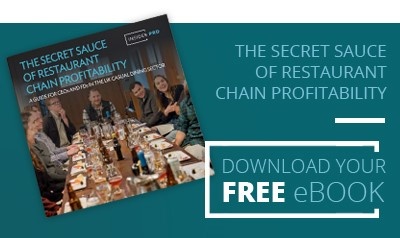Writing anything about BREXIT without a crystal ball is quite a challenge!
Government figures say that the UK imports around 40% of all food, of which 70% comes from the EU.
Mark Carney, governor of the Bank of England, has said food prices could increase between 5% and 10% due to a fall in the value of the pound, imposed tariffs and increased border costs after Brexit.
And any increase in food costs is coming hard on the heels of an increase in labour costs following the increase in the national minimum wage.
As a result, the potential for shortages and price increases is pretty high on the agenda for everyone in the food services sector. Everyone is asking themselves:
- What can we forward order?
- What can we get from other countries, if needed?
- How do we manage any price increases?
- Should we change our menus?
The truth, however, is that whilst we are all to some extent waiting to see what happens, we are ALL going to be hit with whatever happens.
So aren't we still looking at a fairly level playing field going forwards?
Isn't it the case, then, that those who continue to keep control over their business, maximising profits, maintaining cash flow, and retaining customers will be the ones who continue to survive?
And shouldn't we, therefore, instead of crystal ball gazing look at optimising and maximising the things we CAN control NOW?
BREXIT is making businesses realise what they CAN control.
The positive impact of BREXIT is that it's forcing businesses to make sure those parts of the operation that they CAN control are as efficient as possible.
Largely this falls into three main areas:
- Improving throughput (without damaging the customer experience)
- Improving profit by increasing sales
- Reducing those costs that are under your control
Here are some examples:
1. Improving throughput
One of the keys to success for any business is to "sweat the assets" - doing more without adding fixed costs. In a busy casual dining restaurant that equates to getting more people through the door by increasing table turns.
Typically, average dining time is 50-80 minutes but interestingly, the leaders in the industry aim to be closer to 50 minutes.
Our blog "4 ways to improve average restaurant table turnover rate" gives some great ideas of how to improve table turns without compromising on customer experience.
2. Improving profit by increasing sales
Up-selling drinks, sides and other extras is an obvious way to improve profit. Easy to say, but harder to do. It relies on front of house staff to sell more, and kitchen/bar staff to deliver quickly.
Surprisingly small changes can have a big input on profit. Take a look at our blog "4 small changes that dramatically improve restaurant profit and loss" for some more ideas.

Often, the best way to make an up-selling initiative "stick" is to set restaurant KPIs using our UMAMI approach to setting restaurant KPIs.

3. Reducing those costs that are under your control
Let me give you a couple of examples:
Energy costs are usually about 25% of a restaurant's overheads and, with a few simple measures, we've observed that most could save about 20% - which would be like adding 5% to the bottom line.
Maintenance costs can be dramatically reduced by reviewing the entire process of dealing with issues rather than simply negotiating better rates with service contractors. (See our recent case study "Reducing risk and maintenance costs in UK casual dining" for more information.)
To discover more ways to reduce cost, increase sales and make a substantial impact on your restaurant profit and loss, take a look at our 60 page eBook "The secret sauce of restaurant chain profitability".
Or challenge one of our restaurant consultants to discover how much profit you're currently leaving on the table.


